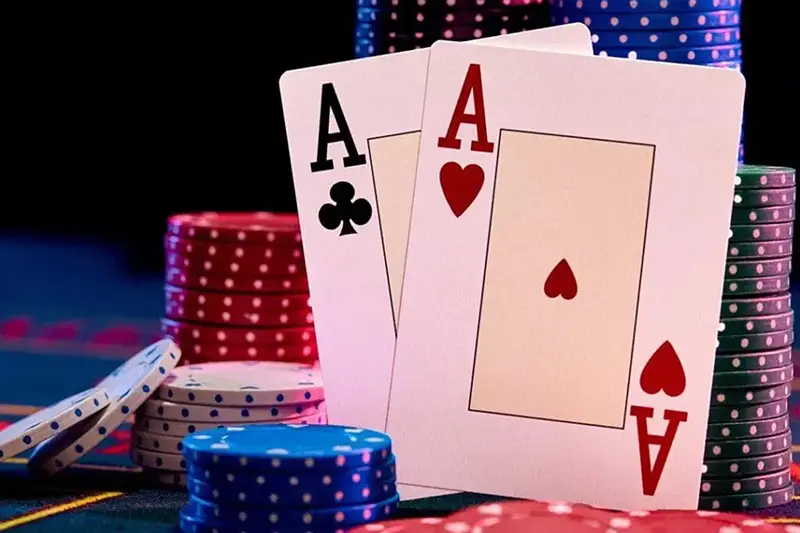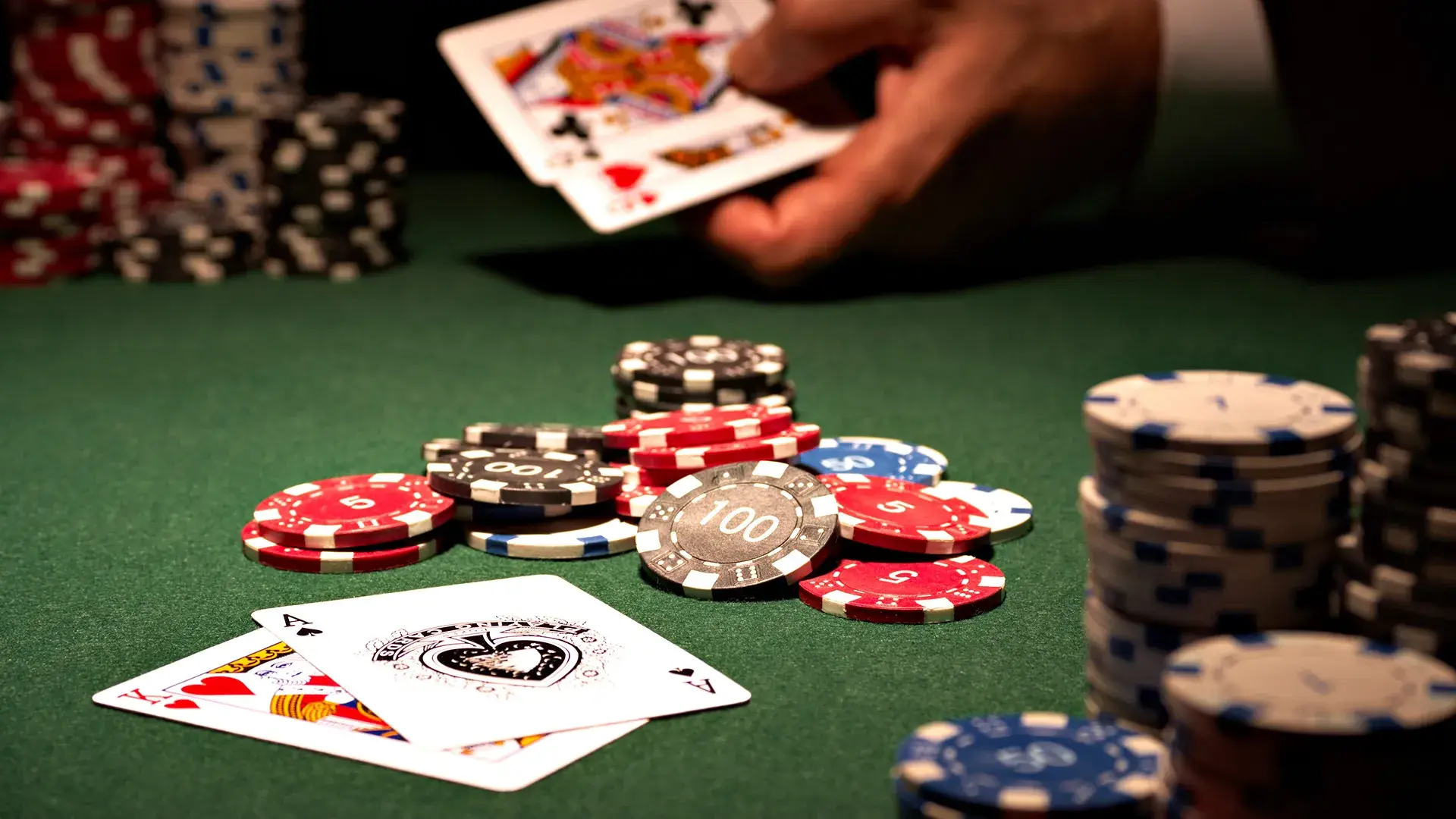Poker is a game where intuition is backed up by mathematical calculations. 80% of players lose money because they ignore maths and rely on luck. But professionals have long known that a mathematical approach can increase the chances of winning by 1.5-2 times. Probabilities in poker are the basis of success at the table. Knowing how to calculate odds, analyse outs, evaluate combinations and understand how to calculate poker odds will help you build a strong strategy.
In this article, we’ll look at formulas, statistics, beginner’s mistakes, and tips and tricks that will help you get ahead.
How maths rules poker
Poker is a mathematical system in which every flop dealt, every decision a player makes is linked to the calculation of poker probabilities.
Probability theory in poker – the basis of success
Without knowledge of probability theory in poker it is impossible to make the right decisions. Every action in the game is connected with numbers: the probability of getting the right card, the chances of collecting a winning combination, the pot odds.

If there are four spades left in the hand and you need to get a fifth, the chance of catching a flush on the river is 19.6%, but if you take into account the turn, the probability rises to 35%. Understanding these values allows you to decide whether you should bet or fold.
Probabilities in poker work over distance. Players who use mathematical strategies win more often than those who act at random.
Probability of card draws in poker
Every card in a deck is subject to strict statistics. The probability of cards falling out in poker can be calculated using the formula:
P = (number of cards needed) / (remaining number of cards in the deck).
If there are two hearts on the flop and one more is needed for a flush, there are 9 hearts out of 47 cards in the deck. Therefore, the probability of closing on the turn is 19% and 35% on the river. These calculations allow you to avoid unnecessary risks and make smart decisions.
How to calculate poker odds in seconds
 Players think that calculating probabilities in poker requires complex calculations, but in practice there are fast and accurate methods that allow you to determine in seconds how favourable it is to continue playing.
Players think that calculating probabilities in poker requires complex calculations, but in practice there are fast and accurate methods that allow you to determine in seconds how favourable it is to continue playing.
Poker outs – what they are and how to calculate them
Poker outs are cards that strengthen the current hand and increase the probability of winning. If a player has four cards of the same suit, he needs one more for a flush. In this case, there are 9 outs.
To instantly calculate the probability, rule 2 and 4 are used:
- on turn: multiply the number of outs by 2 – gives an approximate chance of getting the right card on the next round;
- on Turn + River: multiply the number of outs by 4 to get the total probability of completing the combination in two rounds.
Example: If a player has 9 outs, then:
- the probability of catching a flush on the turn is 18%;
- probability of catching a flush on river – 36%.
Probabilities in poker allow you to objectively assess the situation and make decisions based on maths rather than guesswork.
Calculating poker probabilities – the winning formula
A simple method for understanding the calculation of probabilities in poker is to work with the pot odds. If the probability of improving a combination is higher than the odds offered, the bet is worth placing.
The formula for calculating the pot odds:
(pot size) / (bet size) = odds.
If there are 10,000 chips in the pot and the bet is 2,000, the odds are 5:1. If the probability of winning is higher, the bet is favourable.

Using probabilities in poker allows you to determine exactly when to raise, call or fold.
Probability of Poker combinations
Each combination in poker has a probability of occurrence, which affects the strategy of the game. The probability of combinations in poker is distributed as follows:
- Royal Flush – 0.00015% (occurs once in 649,740 hands).
- Street Flush – 0.002% (about once every 72,000 hands).
- Kare – 0,024% (about once every 4,165 hands).
- Full House – 0.14% (occurs every 693 hands).
- Flush – 0.19% (occurs once every 508 hands).
- Street – 0.39% (about once in 254 hands).
- Threes – 2.11% (about once every 47 hands).
- Two pair – 4.75% (about once every 21 hands).
- One pair – 42,25% (almost every second hand).
- High card – 50,12% (the most frequent outcome without a combination).
The rarer the combination, the higher its strength, but waiting for such a hand can take hundreds of hands. Probabilities in poker help you evaluate whether to continue or fold based on hand strength and potential profit. Understanding the calculations allows you to minimise risk and maximise potential profit over the distance.
Poker odds table: memorise in 5 minutes
Poker odds can be calculated manually, but it is much more convenient to use ready-made tables. They contain the probabilities of all possible combinations, which makes it much easier to analyse and helps you make quicker decisions at the table.
Professional players use tables to instantly assess the odds. For example:
- the probability of picking up a flush draw on the flop is 35%;
- 32% chance of a straight draw;
- the chance to improve to two pair – 26%;
- the chance of getting a set with a pair in hand – 11%.
The use of such tables gives instant access to important information, minimises errors and avoids unjustified bets. Probabilities in poker help not only in mathematical analysis, but also in making strategic decisions that affect the overall success of the game.
Conclusion
 Probabilities in poker are the foundation on which a successful strategy is built. Without a proper calculation of odds, a player risks losing money in the long run. The ability to analyse outs, calculate the odds of combinations and estimate pot odds gives you an advantage at the table. The more accurate the tools you use, the less chance there is. Prepared tables and clear mathematical calculations allow you to make quicker decisions and avoid common mistakes.
Probabilities in poker are the foundation on which a successful strategy is built. Without a proper calculation of odds, a player risks losing money in the long run. The ability to analyse outs, calculate the odds of combinations and estimate pot odds gives you an advantage at the table. The more accurate the tools you use, the less chance there is. Prepared tables and clear mathematical calculations allow you to make quicker decisions and avoid common mistakes.
In poker, the winner is the one who makes informed, not intuitive, decisions.
 en
en  de
de  ar
ar  es
es  hi
hi  fr
fr  nl
nl  it
it  pt
pt  el
el 









